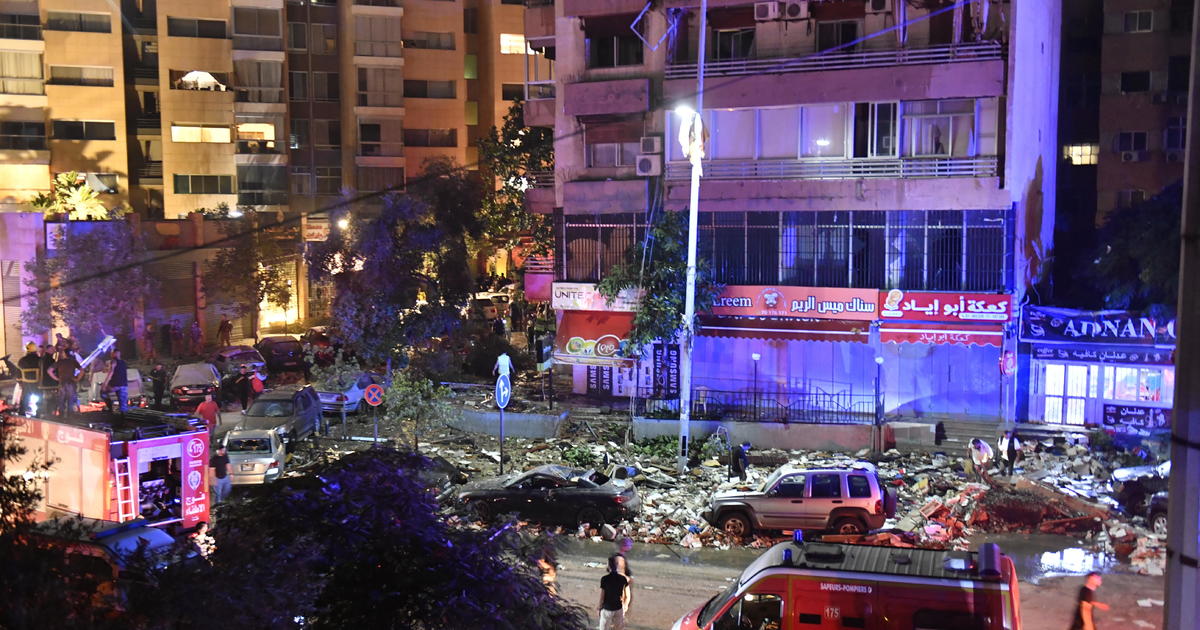The ongoing conflict between Israel and various militant groups in the Middle East, significantly escalated in recent weeks, resulting in widespread destruction and a staggering loss of life in Lebanon. Israel’s intensified airstrikes, targeting Hezbollah and other groups, have triggered a sharp response from Hezbollah, who have retaliated with an increased barrage of rocket attacks against Israel. This escalating cycle of violence has raised serious concerns of a wider regional conflict, further destabilizing an already volatile region and displacing hundreds of thousands of civilians. This analysis focuses on the devastating impact of the Israeli airstrikes on Lebanon, the responses from various militant groups, and the potential for further escalation.
Devastating Impact of Israeli Airstrikes on Lebanon
The Israeli airstrikes on Lebanon have caused catastrophic damage, leading to a significant humanitarian crisis. Reports from the Lebanese Health Ministry indicate over 1,030 deaths, including scores of women and children, in less than two weeks of intensive bombing. The sheer number of casualties and the scale of destruction are alarming and underscore the intensity of the ongoing conflict.
Civilian Casualties and Displacement
The indiscriminate nature of some of the strikes has resulted in a horrifyingly high civilian death toll. Videos and eyewitness accounts depict residential buildings collapsing, leaving families trapped under rubble. The destruction of civilian infrastructure, including homes, hospitals, and schools, has forced hundreds of thousands of people from their homes, causing a mass displacement crisis. The Lebanese government estimates a quarter of a million people are in emergency shelters, with many more seeking refuge with friends, relatives, or even camping outdoors.
Destruction of Infrastructure
The attacks have also crippled essential infrastructure, including power plants and ports, exacerbating the already dire humanitarian situation. The destruction hinders rescue and relief efforts, complicating the provision of crucial supplies like food, water, and medical assistance to the affected populations. This adds another layer of suffering to the Lebanese people who have already faced immense hardship from the conflict.
Medical Personnel Casualties
Reports indicate the deaths of at least 14 medical personnel over a period of two days in Southern Lebanon. The targeting of medical personnel poses a grave threat to the ability of the already stressed healthcare system to respond to the immediate needs of injured civilians. Losing health professionals severely restricts Lebanon’s ability to manage the scale of civilian casualties and injuries, directly hindering relief efforts.
Responses from Hezbollah and Other Militant Groups
The Israeli airstrikes have prompted swift and fierce responses from Hezbollah and other militant groups. Hezbollah, significantly boosted its rocket fire into northern Israel from several dozen to hundreds daily in retaliation for the attacks on Lebanon, causing damage and injuries in the northern part of Israel, despite much of their barrage being intercepted. Other groups, including a Sunni political group allied with Hezbollah, as well as a Palestinian leftist faction, have also reportedly been affected by the Israeli military operations.
Hezbollah’s Retaliation and Strategic Shifts
Hezbollah’s intensified response has marked a significant change from their previous tactics. The surge in rocket attacks shows their determination to respond to the increasing threat to its commanders and operatives. However, even with the significant loss of life amongst its leadership, they are far from incapacitated, as indicated by their continuous barrage of attacks and indicated efforts to rebuild leadership quickly. This development suggests that the conflict’s trajectory is likely far from its endpoint.
Impact of Targeting Hezbollah’s Leadership
Israel’s targeted killing of senior Hezbollah commanders, including the high-profile assassination of Hassan Nasrallah, has undoubtedly impacted the group’s structure. However, the immediate response of sustained, increased military activity and efforts to fill leadership roles suggest the strategy may not yield desired results. Furthermore, the longer term effects of these killings on Hezbollah’s organization, structure, and objectives require deeper and ongoing analysis.
Involvement of Other Militant Groups
Although groups such as the Popular Front for the Liberation of Palestine and Al-Jamaa al-Islamiya haven’t been centrally involved, their incidental involvement highlights the complexity of the regional dynamics and the wide reach of the conflict.
International Involvement and Potential for Escalation
The escalating conflict has drawn considerable international attention, with President Biden expressing concern and working toward avoiding an all-out war in the Middle East. However, there is still a dire need to reach a negotiated peace deal, particularly amidst uncertainty concerning both sides’ commitment to diplomacy and ceasefire discussions.
US Efforts to De-escalate
The US continues to urge both sides to implement a temporary ceasefire agreement. Yet, the ongoing cycle of violence and the lack of visible progress indicate this is not likely to succeed quickly, due to a lack of mutual interest and political maneuvering from all actors involved.
Regional Implications and Risks of Wider Conflict
The conflict holds significant risks of escalating into a wider regional war. With several other actors holding significant stakes, there’s a looming danger that the current Israel-Hezbollah dynamic could attract further regional involvement, potentially transforming this localized struggle into a devastating multi-front war across several countries.
Humanitarian Crisis and International Response
The already severe humanitarian crisis in Lebanon, exacerbated by the latest round of fighting, needs extensive and immediate international assistance. A collaborative effort from UN agencies, international NGOs, and aid organizations is crucial to address the needs of the large-scale displacement, and the medical and material resource shortages caused by the ongoing violence.
Takeaway Points
- The Israeli airstrikes in Lebanon have resulted in a catastrophic loss of life and widespread destruction, creating a major humanitarian crisis.
- Hezbollah and other militant groups have responded with intensified attacks, increasing the risk of a larger regional conflict.
- International efforts to de-escalate the situation are ongoing, but significant challenges remain.
- A sustainable resolution requires addressing the underlying political issues driving the conflict.
- The humanitarian crisis necessitates a concerted and substantial international response to provide urgent relief and support to the affected populations.




